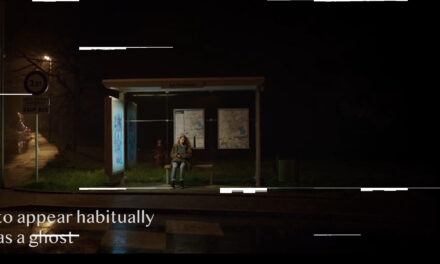There are, I believe, in all countries myths that emphasise some places as outliers, as different from the norm. In France, this myth was humorously captured in the film Welcome to the Sticks (Dany Boon, 2008). In Germany, it is noticeable in how people from the rest of the country talk about Bavaria or indeed people from Bavaria talk about the rest of the country. And in England, it’s how the North is imagined: ‘It’s grim up north’, or as imagined by Elizabeth Gaskell in North and South, the North is of a completely different kind:
The 1975 adaptation with Patrick Stewart. Look at 35 minutes for Thornton’s view on the superiority of the North.
What such myths make evident is that the ‘imagined community’ of the nation is not as unified as Anderson’s words (2008) suggest. But that there is a recognition of real, experiential differences which are perceived as place-based but, more often than not, are connected to other social divisions. In the case of England, this – and this is made apparent in North and South – is largely around class.
How does all of this relate to technology and television infrastructure? This division of class – and a real sense of experiential difference – really struck me when I recently attended a conference on the topic of The Future of Television Distribution in an Online World (10 May), aimed primarily at television industry insiders. There were representatives from Ofcom, the Department for Digital, Culture, Media and Sport (DCMS), the BBC, BT, YouGov, Sky and many other companies. The discussion was about the shift towards internet protocol television (IPTV) – television delivered via the internet – away from digital terrestrial television (DTT). In the UK, digital terrestrial television was rolled out in the 2000s, organised by the BBC who were put in charge due to their remit of having to be universally accessible to everyone in the nation (see Starks, 2007). This meant that the digital infrastructure was facilitated in such a way that the whole country could get access to digital television, and that all that was required was the one-off purchase of a digital box, which unscrambled the digital signal. As the years passed, this digital box was increasingly incorporated into the television apparatus, making the purchase of a box unnecessary.
This process was clearly coordinated: instigated by the (then) Department of Culture, Media and Sport, the BBC was given the clear remit to deliver the switchover. This meant that the switchover was ordered, processed, and delivered through clear corporation between the then (New Labour) government and the main public service broadcaster in the UK. Of course, this gave the public service broadcasters an element of advantage (Iosifidis, 2007): as Given and Norris (2009) point out, DTT or Freeview benefitted mostly the public service broadcasters who gained more channels, with audiences largely fragmenting to sister channels. Thus, while this meant that audiences did become smaller, thus impacting advertising revenue for the main channel, audiences could be reached nevertheless via reruns or indeed alternative or additional content on the sister channels.
The transition to internet protocol television (IPTV) is not one of the remits of the BBC. Rather, the BBC, it became clear at the conference, is desperately waiting for others to lead on this. As the representative of the BBC, Keiran Clifton, indicated, IPTV can actually deliver better and more inclusive television, including a choice of subtitle style, the option to restart a programme, etc. But there is a significant number of people not showing any indication of wanting to switch from DTT to IPTV. This was also mentioned by Catherine Johnson in a talk about the Media Bill: in the UK, there is a large percentage of people who have no intention of switching from DTT to IPTV. In Johnson’s words, these are largely older, from lower socioeconomic backgrounds and live in the North of England, Scotland and Northern Ireland. This list was also mentioned at the conference, and people kept referring to it as ‘the problem’ of digital exclusion. What became apparent, however, was how this was imagined by the people at the conference (who were not just largely from the industry, but also largely based in London). There seemed to be an assumption that people ‘refused’ to switch or were ‘stubborn’. People were imagined as primarily old (thus, the problem would sort itself out once they had all died off). Only the representative of BT and the representative of the Digital Poverty Alliance made clear that such an imagination flew in the face of their own experience.
Both of them displayed a level of frustration, if not anger, that was rather refreshing. Helen Burrows from BT highlighted that the emphasis on television in relation to broadband delivery overlooked what people actually did with their broadband. She mentioned work and gaming as two key components, which both require significant bandwidth that – as she pointed out – cannot currently be delivered simultaneously on the infrastructure that exists. What her description of broadband indicated, and what made it so exceptional at the conference, was that she saw people as more than viewers: she saw them as living beings with a variety of needs and requirements that broadband had to deliver. But she also saw them as people who – when out of work and lacking funds – could easily forgo broadband. In many ways, her conceptualisation made evident that it’s not enough to think of broadband as an isolated infrastructure – a point also driven home by Ramon Lobato (2019: 73). While he was more interested in what remained invisible to users, his point about interconnected systems that are essential to the experience of digital media also works the other way round: in order for audiences to be able to access ITPV, they need to have access to high-end broadband in the first place which is currently distributed in the UK by telecoms companies who often charge extraordinarily high prices for it and have no incentive to deliver it everywhere.
That there is a significant number of people forgoing the expense of broadband was made apparent by Elizabeth Anderson from the Digital Poverty Alliance. She indicated that up to 19 million people aged 16 and over are in digital poverty in the UK. Combine that with the findings of YouGov (also presented on the day) which show that people have stopped bundling in order to reduce the money they spend on television, broadband and telephone as a result of the cost-of-living crisis, and it became clear that for many, internet is not as much as priority as other commodities. At one point, in response to the discussion that followed a talk, Anderson interjected with a plea to understand what was actually going on for those people: ‘They are not thinking about broadband, they are thinking about how they can afford their kids’ school uniforms.’ This call to recognise the people – rather than a behavioural pattern in a number of people – was somewhat shameful to observe in a week in which former Prime Minister, Gordon Brown, again pleaded with the nation to tackle the abject levels of child poverty currently blighting the UK.
It was this interjection – with the particular reference to school uniforms – that impacted on my own response to the day: I had become increasingly frustrated by the discussion about digital exclusion that didn’t consider other areas where access to the internet has become increasingly important. For example, the Heseltine Institute recently conducted research on digital exclusion in relation to social and other services. As researcher Belinda Tyrrell reflected in a personal communication to me, her takeaway from speaking to these digitally excluded people was that this just wasn’t a priority. People were trying to find a way to make the little they had go as far as they could, and that was best achieved by talking to people, going out, asking for favours, asking for advice. People participated in a network of informal support mechanisms that were reliable and relatable because they came in the form of other (local) people. The digital world, in contrast, was too vast, too complicated and one couldn’t ask it any questions. This also comes out of my lived experience in a city in the North of England where poverty is rife. Finding cheap uniforms, for example, is something that I had often spoken about with other parents – and advice about charity shops that were good for our particular school, as well as where to get the maroon jumpers and trousers required often comes out of a chat at the school gates or via our WhatsApp group.
Within that context, television operates as the trusted companion that we do not have to graft for in order to access it: it is there, delivered to us in the way we know. It doesn’t require us to shop around or find out what the cheapest option is because the cheapest option is already there: through DTT. Thus, we can observe both a consumer choice (as the cheapest option) and a refusal to make television another consideration for market-induced decision-making (we just stick to what we have) in a world where decision making constantly exhausts us. It is this odd combination of market-driven demand and refusal to engage in more consumption choices that seems to drive the stubborn continuation of DTT. Perhaps, if the government decided to put someone in charge of the IPTV switchover, and if they were delivering this through a cheap one-off purchase (rather than a monthly additional bill that we can all do without), people would switch over.
But this is not the point of this short piece. Rather I wanted to express my frustration with the fact that the industry seems to largely treat the shift in infrastructure only in relation to technology and behavioural patterns that can be observed through numbers. In addition, I wanted to note that they (and perhaps also we who are increasingly interested in numbers) seem to refuse to engage with real people. But by doing so, they/we miss again the complexities of use and their connection to the lived experiences of real people, thus obscuring what using media and television is really like.
Elke Weissmann is Reader in Film and Television at Edge Hill University. Her books include Transnational Television Drama (Palgrave) and the edited collection Renewing Feminisms (I.B.Tauris) with Helen Thornham. She is an ECREA editor for Critical Studies in Television. She is currently working on a book on national industries in the transnational world of global high-end drama. She migrated to the UK in 2002 after realising that German television was as bad as she remembered.






I love this take (though, as a qualitative ethnographic researcher, I would :P). It reminds me of some of the conversations I’ve had about digital inequality (sometimes technology inequality more generally) when Global North residents assume a wider-range of digital access (or TV access, as radio is sometimes a major news/information source) in the Global South or in socioeconomically deprived areas of the North than actually exists, particularly when under authoritarian governments and/or at times of disaster (which is generally what I’m discussing when this stuff comes up).